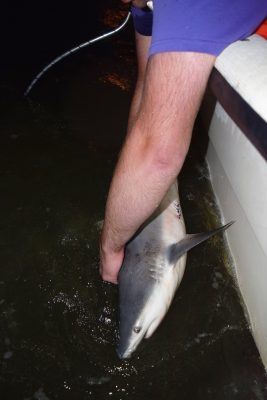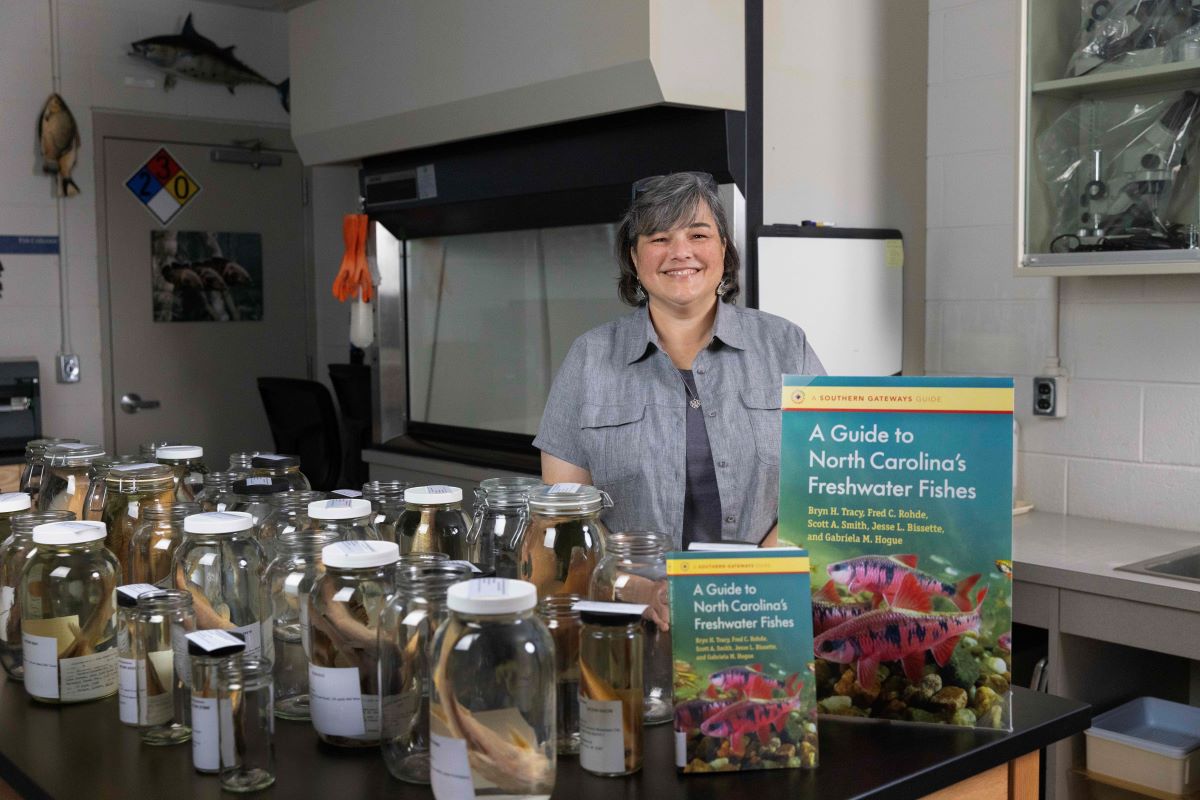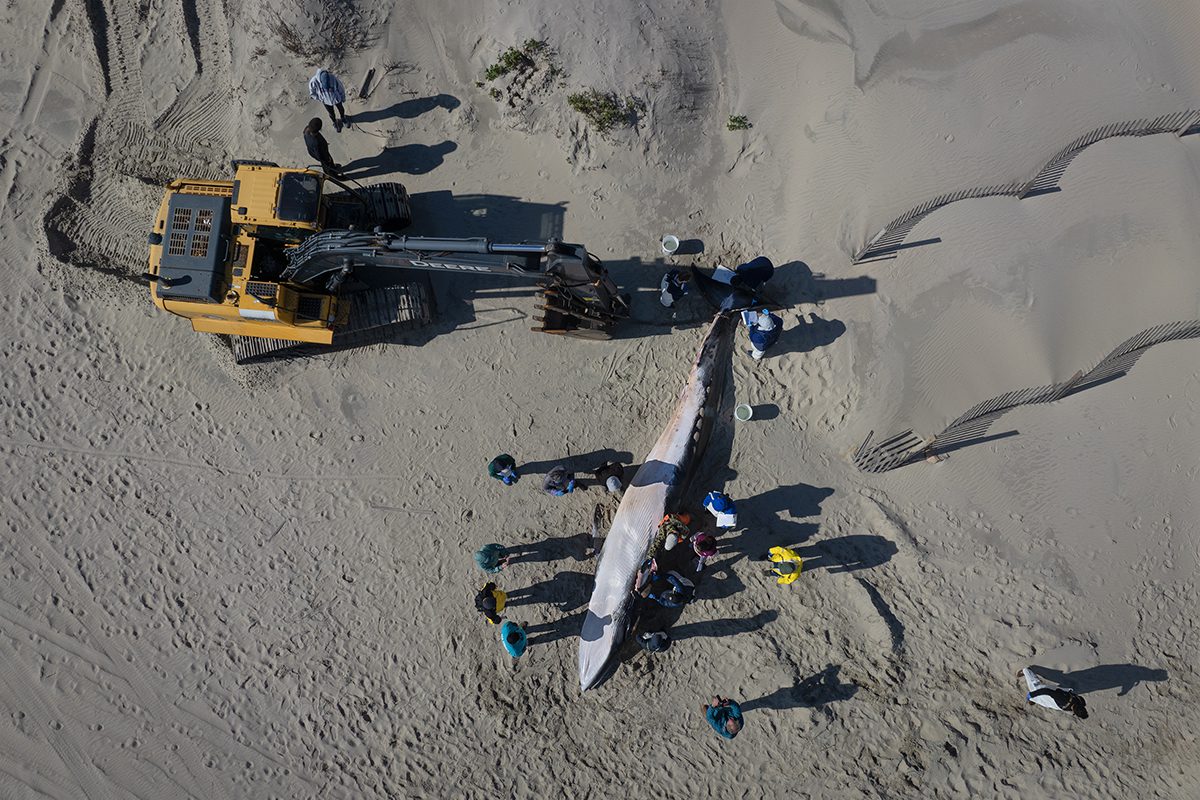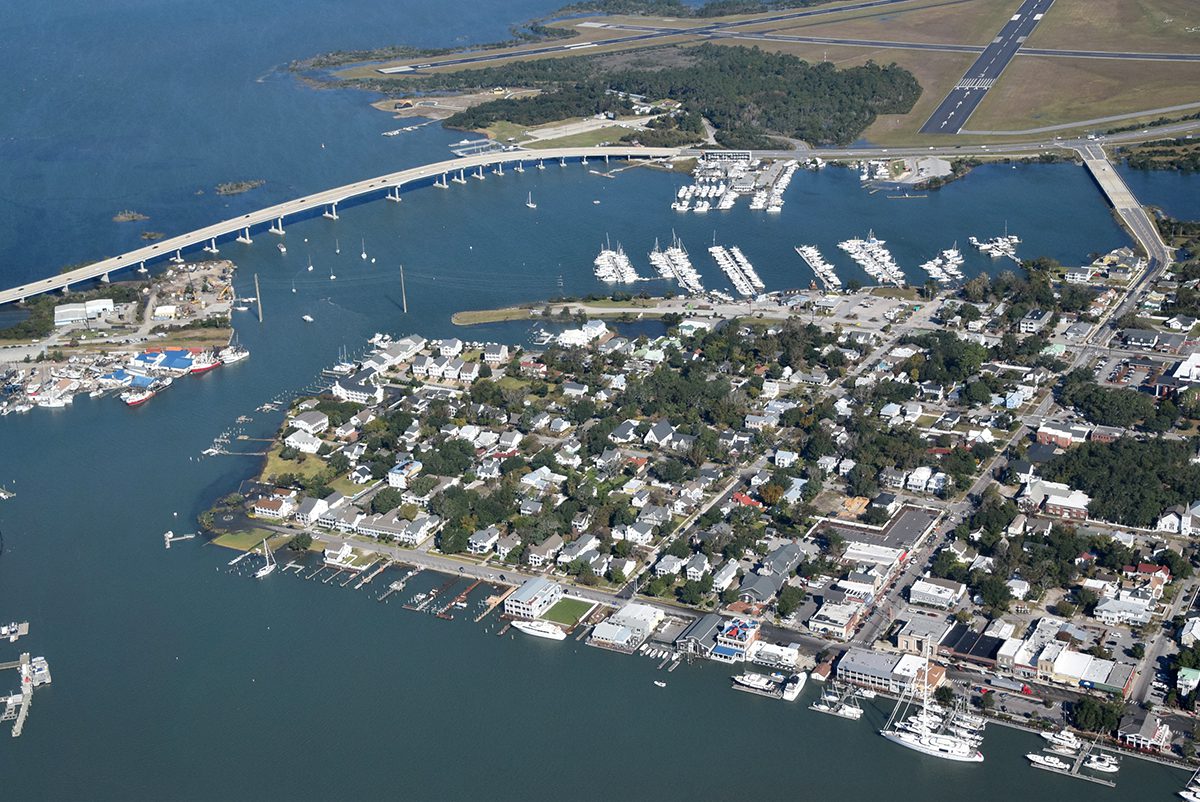EASTERN NORTH CAROLINA — Bull sharks in recent years have found the Pamlico Sound to be a good place to birth their young, according to a study published last month. But scientists say more research is needed to understand exactly what effects the new nursery habitat might have on the sound’s ecosystem.
Meanwhile, longer-term research shows increasing numbers of big sharks across the region, which may be a good thing.
Sponsor Spotlight
Charles Bangley with the Fish and Invertebrate Ecology Laboratory at the Smithsonian Environmental Research Center is the lead author of a study that showed that bull sharks were having babies in the Pamlico Sound in increasing numbers from 2011-2016 during the warmer summer months.
“As far as the ecology goes, these sharks are kind of one species among many that have been documented as expanding their range northward, or poleward, kind of on a global scale,” Bangley said. “These kinds of animals that tend to be endemic in warmer water are being found in areas that use to be quite a bit cooler but now have been brought up into (the sharks’) comfort zone by changing temperatures and some other environmental factors.”
He said that with temperatures increasing in the early summer, which is when bull sharks typically give birth, the waters of the Pamlico have come into a “preferred range” for the sharks to utilize as a nursery habitat.
Bull sharks in the Pamlico aren’t new, Bangley said, but the presence of their babies is.
Sponsor Spotlight
“Adult bull sharks have been spotted in the sound for as long as anybody has been spending time in the sound,” he said. “The adults kind of move around and go where they want (in and out of the Pamlico), but it’s these juveniles that are new.
“Bull sharks have been part of the Pamlico Sound for a long time, but they seem to be using the sound in a different way now. Instead of these quick visits to forage, they’re now giving birth and having decent numbers of juveniles actually spend at least their first summer in the sound.”
So what does it mean for the other species living in the sound to have all these baby sharks around?
“That’s something that we’re actually looking at as the next step,” Bangley said. “That’s something we’re interested in looking at for sure – what these sharks might be interacting with in the system.”

He said studying the stomach contents of bull sharks caught in the Pamlico will be a big part of that next step along with other research.
“We plan to look at the diets, we plan to continue our tagging efforts. Once we identify what some of the key prey species are, the next steps may be to look at the interactions between predator and prey, to see if the presence of these sharks is affecting the numbers and the distribution of things like rays, red drum and other potential prey species,” Bangley said. “Bulls act as an apex predator in estuaries, so they can potentially be one of those top predators and have a trickle-down effect through the food web.”
Bangley noted that bull sharks in Florida eat marine catfishes, which are not currently present in the Pamlico, as well as Atlantic stingrays and sometimes cownose rays, which are common in the areas of the Pamlico where juveniles are seasonally residing.
“There are also other things, like red drum in that area. There’s spotted sea trout, croaker – there’s plenty of other fish that are actively targeted by fisheries,” Bangley said. “There’s a chance you could see these sharks interacting with the rays particularly, but also some fish species that we also like to target. So there’s some potential for some human-wildlife conflict going on in Pamlico Sound.”
A Window to What’s Happening
Martin Benavides is a doctoral student researching the ecological role of sharks on the coast at the University of North Carolina Institute of Marine Sciences in Morehead City. His research involves conducting shark surveys that began in the early 1970s and collecting data, as well as analyzing the shark population data collected over the last 45 years.
He said the bull shark study was interesting and agreed more research is needed to understand how shark habitats might be shifting or changing.
“With sharks, particularly the longer-lived species, which my understanding is the bull shark falls under this category, I think we have a window into what could be happening,” Benavides said. “And it’s really important that we follow up with this long term to see if these increases are something that will be occurring over decades.
“That’s sort of the angle of my research coming in because we’ve been surveying populations for decades, and we feel that you really need that time series to make definitive answers about changes in shark populations.”
Benavides said the study does fall in line with patterns he’s seen across the Southeast.
“I don’t necessarily think there’s any reason to doubt that there will be an increase in bull sharks – the pattern is that we’re seeing an increase in larger sharks,” he said.
And while “more bigger sharks” may not be something people like to hear, Benavides said it is a sign of optimism from a marine science standpoint.
“Sharks fill a really important role in the ecosystem as apex predators, and so they’re kind of giving us a sign that the ocean is returning at least closer to what it would have been before (human) impact on shark populations, which would have been to pretty much decimate them in the ’70s and ’80s before there was any sort of management put in place in the ’90s.”
As important as their role might be, it’s hard to ignore the potential for human contact. But the sharks in question are small and generally stick to their nursery habitats that tend to be in fairly uninhabited areas of the Pamlico, Bangley said.
“The biggest impact they are likely to have on people is interactions with fisheries,” he said. “The area of Pamlico Sound that they’re in is not particularly settled, it’s kind of along the Hyde and Dare county (mainland) shoreline. They seem to be along a stretch of the shoreline from Rose Bay out to this area called the Long Shoal River in the middle of the Alligator River Wildlife Refuge, so there’s nobody out there.”
It’s not an area that gets much tourism action, but it does see some recreational fishing and a fair amount of commercial fishing, he said.
“There’s the potential that these sharks might kind of interfere with fishing gear or grab somebody’s fish off the hook or something like that,” Bangley said. “That’s probably going to be the main interaction with these sharks, especially since they are juveniles.”
Benavides noted a study conducted in 2014 that showed promising results of shark-safe barriers using magnetic deterrent as a possible way to keep sharks out of baited areas.
“While there may be some negative interactions with humans – and this mainly relates to our behavior – there are things we can do to try to minimize those interactions,” Benavides said.
But he stressed that any increased contact humans have with sharks – whether it’s due to population numbers returning, populations migrating north or even more people spending more time on beaches – it’s largely caused by humans.
“I think it’s important to keep that in context,” Benavides said. “What we’re seeing – if there are increases of encounters – is probably more a reflection of our actions than it is of the sharks’. I think there is sort of a fear that has been blown out of proportion because in terms of risk (of a shark encounter) there’s relatively almost none.”









